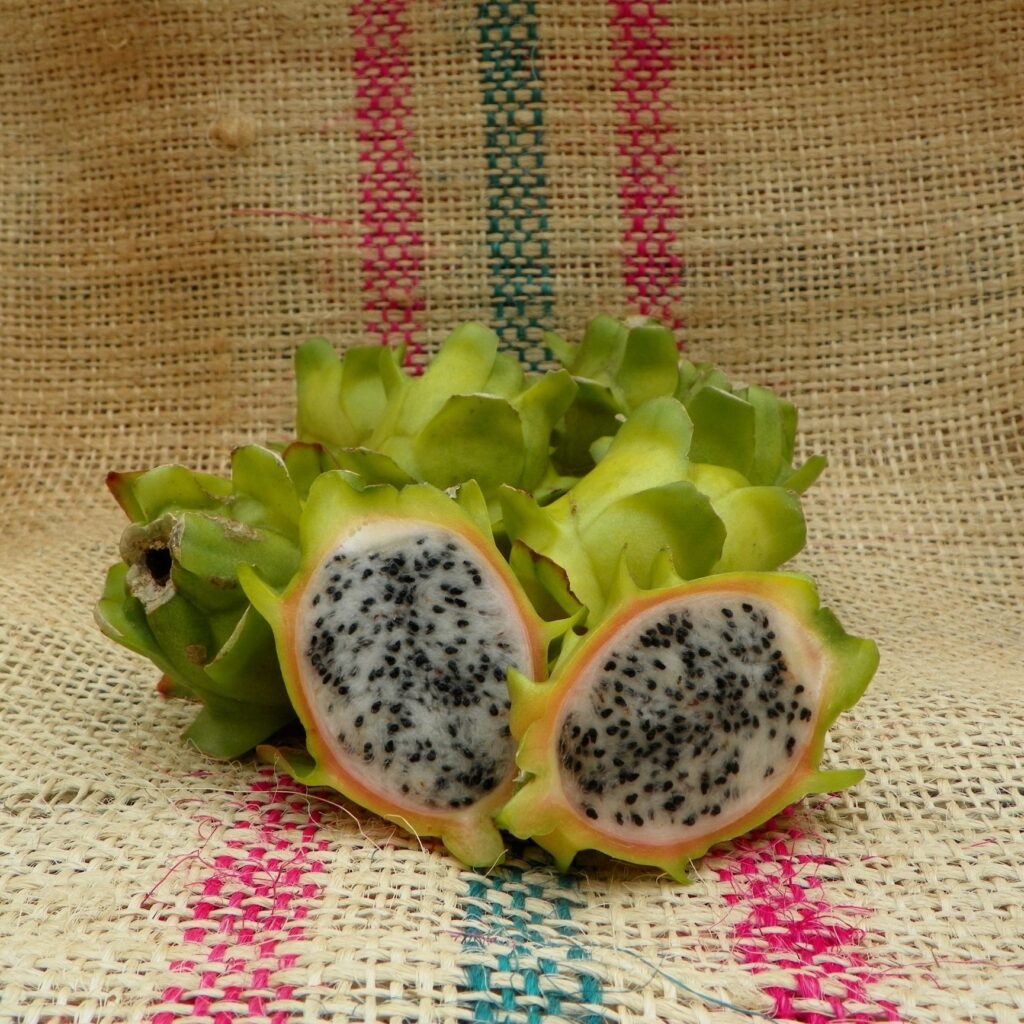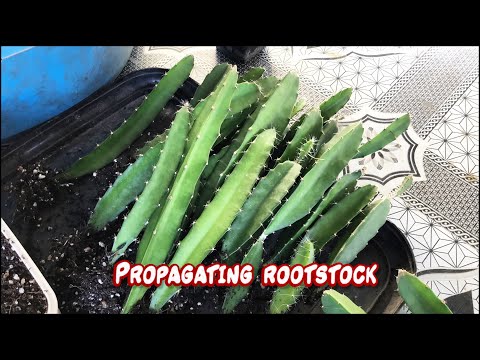Introduction
In the ever-fascinating realm of botanical hybrids, a captivating union emerges – Megalanthus X Undatus. These hybrids, often referred to as dragon fruit or pitaya, embody a harmonious fusion of two distinct species within the Hylocereus genus. Let’s embark on an informative journey, delving into the intricate details of this enigmatic crossbreed.
Megalanthus X Undatus cross-hybrids:

Origins and Lineage
The story begins with the convergence of Megalanthus and Undatus, two stalwarts in the world of cacti. Each species brings its unique genetic signature to the table, contributing to the mesmerizing characteristics of the resulting hybrid.
Hylocereus Megalanthus
Hylocereus Megalanthus, also known as the Yellow Dragon Fruit or Yellow Pitaya, stands distinguished by its vibrant yellow exterior and sweet, tangy flavor. The species hails from South America, particularly thriving in regions with tropical and subtropical climates.
Hylocereus Undatus
Hylocereus Undatus, the White-fleshed Pitaya or more commonly known as the Dragon Fruit, is renowned for its nocturnal, ornate blooms and succulent white flesh speckled with black seeds. Originating from Central America, it has become a global favorite, cultivated in various climates.
Characteristics:
1. Visual Appeal
The offspring of this botanical matrimony inherits a visual allure that captivates the beholder. The outer skin, a harmonious blend of yellow and green hues, echoes the tropical origins of its lineage. Intricate patterns and spines reminiscent of both parent species adorn the elongated, triangular stems.
2. Night-Blooming
The hybrid mirrors the nocturnal flowering habit of Hylocereus Undatus. As dusk descends, the spectacle unfolds – large, fragrant flowers burst forth, unveiling a delicate, ephemeral beauty. The marriage of genetics orchestrates a floral symphony that bewitches the senses.
3. Gastronomic Delight
Delve into the culinary realm, and the hybrid showcases its versatility. The succulent, white flesh inherited from Hylocereus Undatus provides a neutral canvas, while the sweet tanginess from Hylocereus Megalanthus imparts a distinctive flavor profile. Culinary enthusiasts find an array of possibilities, from exotic fruit salads to refreshing beverages.

Cultivation and Care
1. Sunlight and Environment
For optimal growth, provide the hybrid with abundant sunlight. A balance between direct sunlight and partial shade mimics the natural habitats of its parent species. Hylocereus Megalanthus X Hylocereus Undatus thrives in well-draining soil, preferably a cactus or succulent mix.
2. Watering
Mastering the art of hydration is crucial. Allow the soil to dry between waterings, preventing the onset of root rot. Tailor the watering schedule to the seasons, recognizing the plant’s dormant phase during winter.
3. Temperature
True to its tropical lineage, the hybrid detests frost. Shield it from chilly temperatures, offering a warm haven for uninterrupted growth. A minimum temperature threshold must be maintained to safeguard against potential damage.
The Enigmatic Fruit
At the heart of the intrigue lies the fruit – the culmination of this botanical liaison. The hybrid fruit, with its alluring amalgamation of flavors, epitomizes the symbiotic dance between Hylocereus Megalanthus and Hylocereus Undatus.
1. Appearance
The outer shell, a testament to genetic artistry, showcases a gradient of yellow and green. The scales, reminiscent of dragon hide, add an element of fantasy. Slice through the vibrant exterior, and a canvas of white punctuated by tiny black seeds unfolds.
2. Sweetness
Bite into the hybrid fruit, and a melange of tastes envelops the taste buds. The sweetness from Hylocereus Megalanthus meets the mildness of Hylocereus Undatus, creating a gastronomic masterpiece. The interplay of flavors is a sensory delight, a testament to the careful selection of parent species.

Propagation Adventures
For those inclined towards botanical experimentation, propagating Hylocereus Megalanthus X Hylocereus Undatus opens doors to new horticultural horizons.
Stem Cuttings: Embrace the art of propagation by utilizing stem cuttings. Allow the cut ends to callous before introducing them to well-draining soil. This method unveils the potential for cultivating multiple hybrids.
Final Thoughts
In the grand tapestry of botanical wonders, Hylocereus Megalanthus X Hylocereus Undatus emerges as a testament to nature’s creativity. From its origins rooted in South and Central America to the enchanting blend of visual allure, nocturnal grandeur, and gastronomic delight, this hybrid transcends the ordinary.
As horticulturists and enthusiasts alike delve into the mysteries of this crossbreed, the journey becomes an exploration of genetic poetry. The dance between Hylocereus Megalanthus and Hylocereus Undatus continues to unfold, inviting all to witness the perennial symphony of life encapsulated within the succulent embrace of this botanical enigma.
